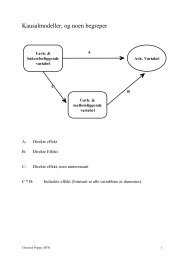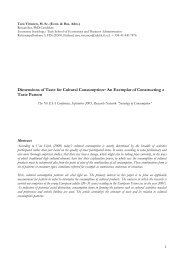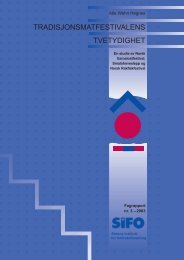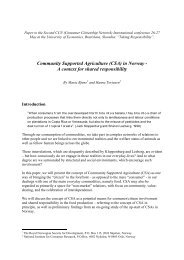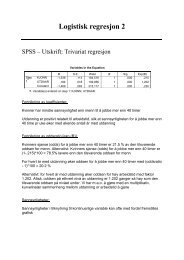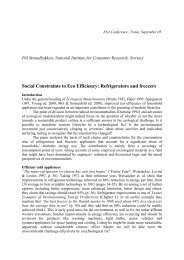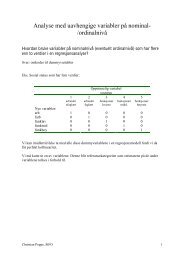Rapport nr - SIFO
Rapport nr - SIFO
Rapport nr - SIFO
- No tags were found...
Create successful ePaper yourself
Turn your PDF publications into a flip-book with our unique Google optimized e-Paper software.
7 SuccessTo evaluate the success of labels or appellations, we should not only look at the economical results butalso at consumer perceptions.7.1. Some economical dataIn the previous presentation of the food sector in France, we have shown that local food occupies approximately20% of the food market with a current growth of almost 10%.This growth is due to confidence mainly attributed to the official signs of quality and also to the recentsanitary safety crisis. The Terroir store brands have increased their annual turnover at 15% per year.This success is shown by the increase in the number of products now available to consumers. Todaylocal food companies are very profitable, but small producers have also increased their sales thank tothis increase in consumer demand. Unfortunately, data concerning the economical aspects are veryscarce. Nevertheless, it is interesting to evaluate the success of labels and appellations by investigatingconsumer perceptions in this sector.7.2. Success in consumer perceptionsAccording to a survey by the CREDOC (Centre of Research for the Study and the observation of lifeconditions) conducted in 2001 and directed by the National Consumer Institute (INC), French consumerstried to find new cues to reassure themselves on food quality following the Mad Cow crisis in1996. At that time, nearly all media have evocated this crisis with scientific reports and much pessimismconcerning the sanitary quality of food. However, in 1996 the sanitary control in France wasquite confused and managed the situation with a definite lack of efficiency. The disorganisation ofcontrols and this amplification of the crisis by the media resulted in a total loss of confidence in thefood system from the French public. The only products which were completely guaranteed for thequality were the labelled products, especially Label Rouge products since it already ensured qualityeven before this crisis, and products with autonomic controls. In this period of crisis, the appellations,PGI and PDO, did not signify quality since they could not really make this. This is because appellationscan not prove the quality of their products since they are not independent controls of quality realisedby PDO or PGI. The only sanitary controls at that time were the produced by the French governmentby special administrations, like DGCCRF or DSV. The Mad Cow crisis lasted several years andwas even been followed by another crisis, the Ovine Spongiform Encephalitis. This second crisislasted until the beginning of the 21 st century.Communication for more than 4 years about the dangers of food changed consumer expectations. Afterthese crises, the relation between consumers and food was a relation of fear. The communication ofLabel Rouge presenting quality as the main factor for this label was successful, as we can see in thestudy of CREDOC-INC in 2001 (Figure 7.1), Label Rouge is the famous and well-known signs of




